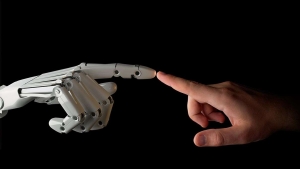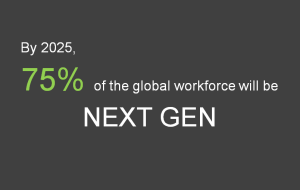 I recently returned from participating on a global advisory board on education and certification and we debated not just the future but how we can pin it down long enough to be able to describe it and build a strategy around it.
I recently returned from participating on a global advisory board on education and certification and we debated not just the future but how we can pin it down long enough to be able to describe it and build a strategy around it.
Tech refuses to stand still and while it isn’t quite the bedlam that the comedy series Silicon Valley portrays, it isn’t a million miles away. On my journey back I deliberated and concluded one thing for certain – the larger the audience we try to reach, the simpler the message has to be, otherwise it flies over our heads along with the rest of the information box labelled “overload.”
So what is the next wave? I summarised it as a 3-layer cake with all manner of ingredients built around intelligence, security and people.
The first, top layer, a segment called ‘intelligence,’ is the topping that will propel us into creative new spaces – AI, AR, VR, 3D, (already too many acronyms), drones, robots and my favourite internet of things. This will lead us towards everything cloud, everything connected and everything mobile.
The foundation or base is the security that will be necessary to hold things together, protect the safe business transition to the above and without which we can expect a myriad of challenges that could well hold back progress.
The flavouring in the middle, always the best bit, is where we come in – the people and the skills that underpin the change, the brainpower to drive it forward and the mindfulness to ensure things are done correctly, competitively and for the long-term.








 So, how can you reduce the share of your core market and come out trumps? I have just returned from an excellent leadership meeting in Minneapolis where the Pearson VUE team talked strategy, explored ideas and visioned the future. The level of engagement was as good as I have seen for some time and when I volunteered this one thought to the group, I was met with silence…but only for seconds.
So, how can you reduce the share of your core market and come out trumps? I have just returned from an excellent leadership meeting in Minneapolis where the Pearson VUE team talked strategy, explored ideas and visioned the future. The level of engagement was as good as I have seen for some time and when I volunteered this one thought to the group, I was met with silence…but only for seconds.